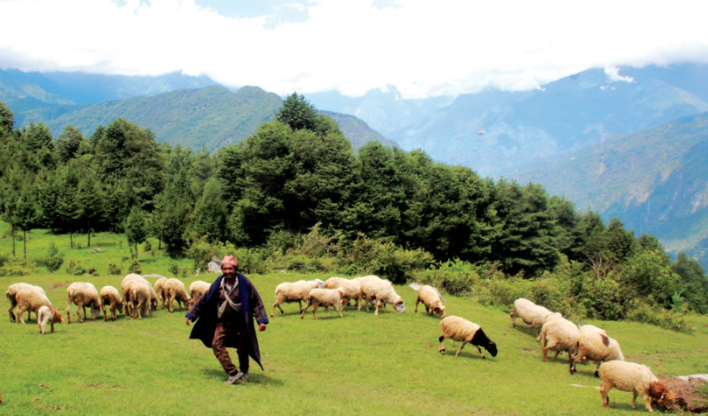By the end of the Pleistocene Epoch—starting some 2.6m years ago and lasting till 11,700 years ago—pastoralism, or expansive grazing system for livestock production, had already taken shape as settled agriculture started. This system thus evolved as a source of sustenance in the interface period of a new climate and a new phase in the life of Homo sapiens. This least understood or documented ancient way of life still continues. Across the world, over 100-200m people still practice it as an economic activity. One-fourth of the planet’s territorial surface still is being devoted to the pastoral production system. When the system started, the planet was on the cusp of a change from an ice age to a gradual warming (not the human-induced one that tentatively started around the industrial revolution) and modern humans were found all over the planet. The pastoral systems are usually found in the harsh climatic zones and invariably, these are the most resource-scarce geographies. This system thus is a super climate-resilient and adaptive one. The system revolves around unrestricted mobility of people and livestock in cyclical mode to access grazing grounds. Pastoralists cross national boundaries, intra-country boundaries and also operate on both private and public lands. Pastoralism also thrives around the cropping system as they benefit each other: Crop residue on farms become the fodder for grazing livestock, while the latter give the manure to the farmers. But, here comes the challenge. Modern systems have outrightly rejected this system as a redundant one. Rather, environment departments across the world have termed grazing as a threat to the environment. Agricultural policies have, over time, prioritized settled agriculture and livestock farming as the way to boost productivity. As a result, pastoralism has been pushed into oblivion without any recognition. Thus, when the UN’s Food and Agriculture Organization (FAO) released the “Making way: developing national legal and policy frameworks for pastoral mobility”—a definitive set of arguments and recommendations on how to protect the pastoral community and their mobility—hope for a dosage of support to this system arose. Pastoralists are considered backwards looking and unproductive, and have historically been undermined by adverse legislation and a lack of supportive legislation. Pastoralists are vulnerable to resource appropriation, sedentarization and restrictions on mobility. As they are squeezed out of productive areas, they are led to concentrate in and compete over limited available grazing resources. In the absence of legislation that protects and regulates mobility, pastoralists enter into conflict with other resource users and the state. Pastoralism is always blamed for harming the environment; and the allegation is used to argue that it should be disbanded. But, as recent support for its revival and recognition picks up in many countries, including in Europe, Africa and Asia, the system has many environmental and economic services. Pastoralists are generators and distributors of natural manures. According to estimates, such manures are estimated to be worth $45bn a year. Various studies show that pastoral systems have more protein output per unit of feed in comparison to intensive systems being practiced currently. In India, pastoralism accounts for more than 70 percent of the total meat output and 50 percent of the total milk output. But in the case of Nepal, it has not been documented. “The livestock sector comprises 3.5 percent of Nepal’s GDP, with two-thirds coming from such pastoralist production,” estimated the Meat Atlas 2021. More to it, as a practice, it is the economy of the poorest communities in the harshest of the geographies. In times of a new climate, this system has evolved to fight changing climatic conditions more effectively. So, it remains as a viable source of sustenance for the poorest. Policy support to this system will be a step toward making the economy of the poorest climate-resilient. The author is senior veterinary health management consultant at Devine Veterinary Clinic










